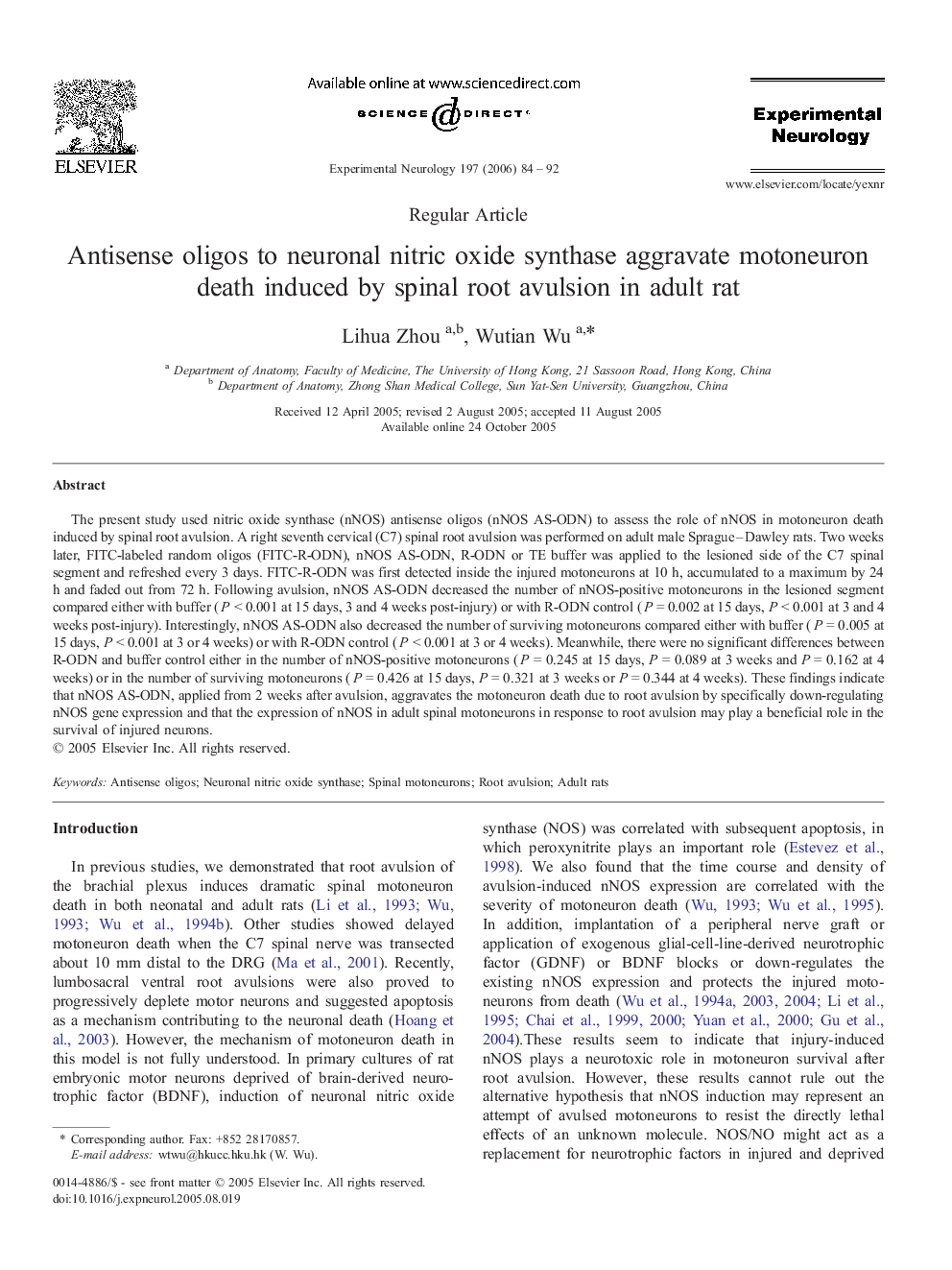| Article ID | Journal | Published Year | Pages | File Type |
|---|---|---|---|---|
| 3057667 | Experimental Neurology | 2006 | 9 Pages |
The present study used nitric oxide synthase (nNOS) antisense oligos (nNOS AS-ODN) to assess the role of nNOS in motoneuron death induced by spinal root avulsion. A right seventh cervical (C7) spinal root avulsion was performed on adult male Sprague–Dawley rats. Two weeks later, FITC-labeled random oligos (FITC-R-ODN), nNOS AS-ODN, R-ODN or TE buffer was applied to the lesioned side of the C7 spinal segment and refreshed every 3 days. FITC-R-ODN was first detected inside the injured motoneurons at 10 h, accumulated to a maximum by 24 h and faded out from 72 h. Following avulsion, nNOS AS-ODN decreased the number of nNOS-positive motoneurons in the lesioned segment compared either with buffer (P < 0.001 at 15 days, 3 and 4 weeks post-injury) or with R-ODN control (P = 0.002 at 15 days, P < 0.001 at 3 and 4 weeks post-injury). Interestingly, nNOS AS-ODN also decreased the number of surviving motoneurons compared either with buffer (P = 0.005 at 15 days, P < 0.001 at 3 or 4 weeks) or with R-ODN control (P < 0.001 at 3 or 4 weeks). Meanwhile, there were no significant differences between R-ODN and buffer control either in the number of nNOS-positive motoneurons (P = 0.245 at 15 days, P = 0.089 at 3 weeks and P = 0.162 at 4 weeks) or in the number of surviving motoneurons (P = 0.426 at 15 days, P = 0.321 at 3 weeks or P = 0.344 at 4 weeks). These findings indicate that nNOS AS-ODN, applied from 2 weeks after avulsion, aggravates the motoneuron death due to root avulsion by specifically down-regulating nNOS gene expression and that the expression of nNOS in adult spinal motoneurons in response to root avulsion may play a beneficial role in the survival of injured neurons.
